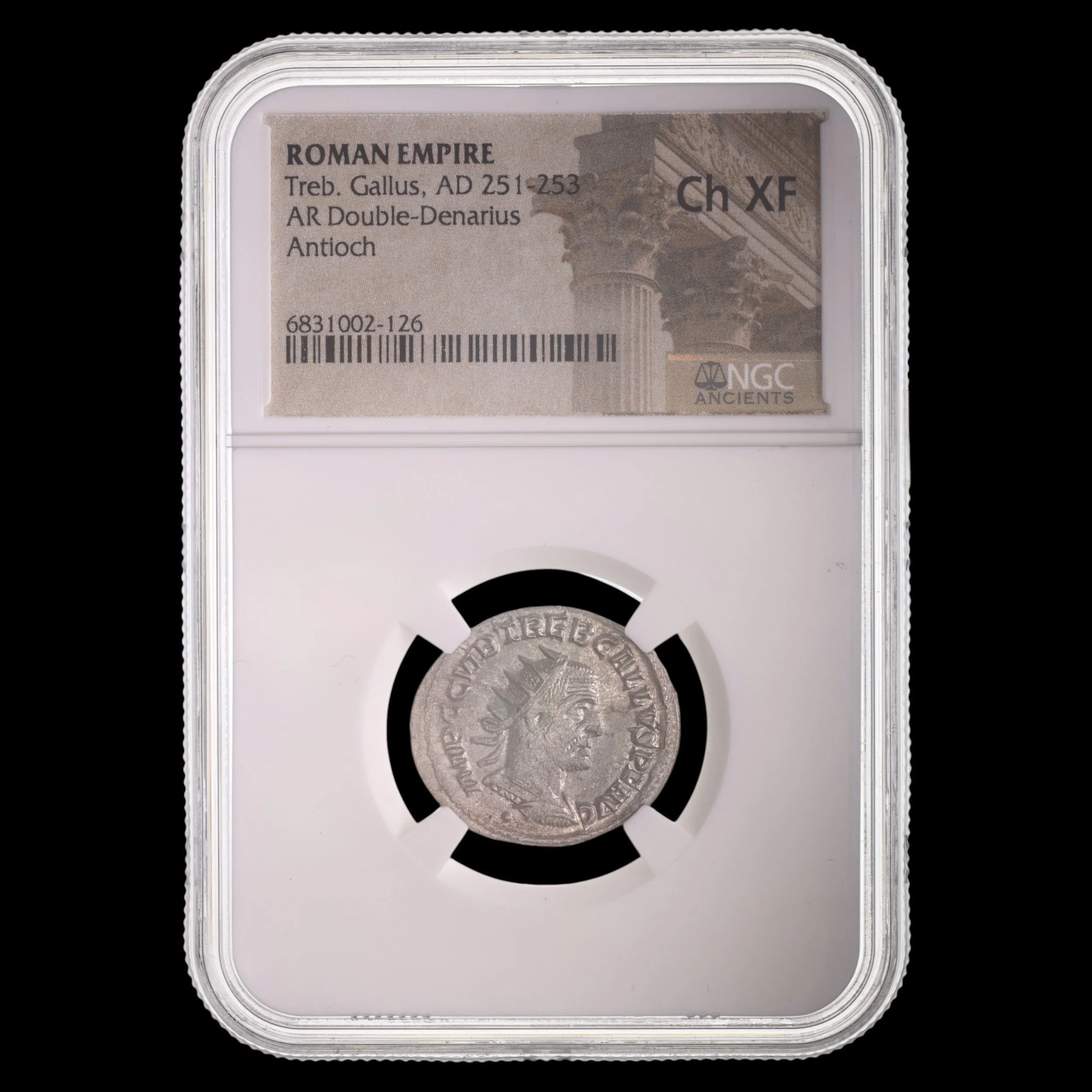 Image 1 of 7
Image 1 of 7

 Image 2 of 7
Image 2 of 7

 Image 3 of 7
Image 3 of 7

 Image 4 of 7
Image 4 of 7

 Image 5 of 7
Image 5 of 7

 Image 6 of 7
Image 6 of 7

 Image 7 of 7
Image 7 of 7








Roman AE Of Galerius (about 1,710-1,730 years ago) (AE1)
The coins shown are representative examples of the grade and type, but not the actual specimens for sale. For details on NGC’s grading standards and definitions, please refer to our NGC Grading page.
This bronze coin was issued during the reign of Galerius, who rose from military commander to become first a Caesar (junior emperor) and later Augustus (senior emperor) during the Tetrarchy period. These coins would have circulated throughout the eastern provinces he controlled, reflecting the administrative division of the empire introduced by Diocletian.
Coin Description:
Front side: Profile portrait of Galerius wearing either a laurel wreath (as Caesar) or radiate crown (as Augustus), with his name and titles in Latin
Back side: Likely displays typical Tetrarchic imagery such as military scenes, sacrifice scenes, or personifications of Roman virtues
Technical Details:
Bronze composition (copper alloy)
AE denomination (bronze coinage)
NGC certified (Numismatic Guaranty Corporation)
Minted between 293-311 CE in eastern imperial mints
Condition: Certified by NGC, specific grade not provided
Historical Significance: This coin represents the Tetrarchic period when the Roman Empire was systematically divided into administrative units under Diocletian's reforms. Initially appointed Caesar in the east under Diocletian, Galerius later became Augustus (senior emperor). He is particularly known for his severe persecution of Christians and later issuing the Edict of Toleration shortly before his death in 311 CE, which ended the persecutions. This policy shift helped pave the way for Constantine the Great's later embrace of Christianity.
The coins shown are representative examples of the grade and type, but not the actual specimens for sale. For details on NGC’s grading standards and definitions, please refer to our NGC Grading page.
This bronze coin was issued during the reign of Galerius, who rose from military commander to become first a Caesar (junior emperor) and later Augustus (senior emperor) during the Tetrarchy period. These coins would have circulated throughout the eastern provinces he controlled, reflecting the administrative division of the empire introduced by Diocletian.
Coin Description:
Front side: Profile portrait of Galerius wearing either a laurel wreath (as Caesar) or radiate crown (as Augustus), with his name and titles in Latin
Back side: Likely displays typical Tetrarchic imagery such as military scenes, sacrifice scenes, or personifications of Roman virtues
Technical Details:
Bronze composition (copper alloy)
AE denomination (bronze coinage)
NGC certified (Numismatic Guaranty Corporation)
Minted between 293-311 CE in eastern imperial mints
Condition: Certified by NGC, specific grade not provided
Historical Significance: This coin represents the Tetrarchic period when the Roman Empire was systematically divided into administrative units under Diocletian's reforms. Initially appointed Caesar in the east under Diocletian, Galerius later became Augustus (senior emperor). He is particularly known for his severe persecution of Christians and later issuing the Edict of Toleration shortly before his death in 311 CE, which ended the persecutions. This policy shift helped pave the way for Constantine the Great's later embrace of Christianity.






















